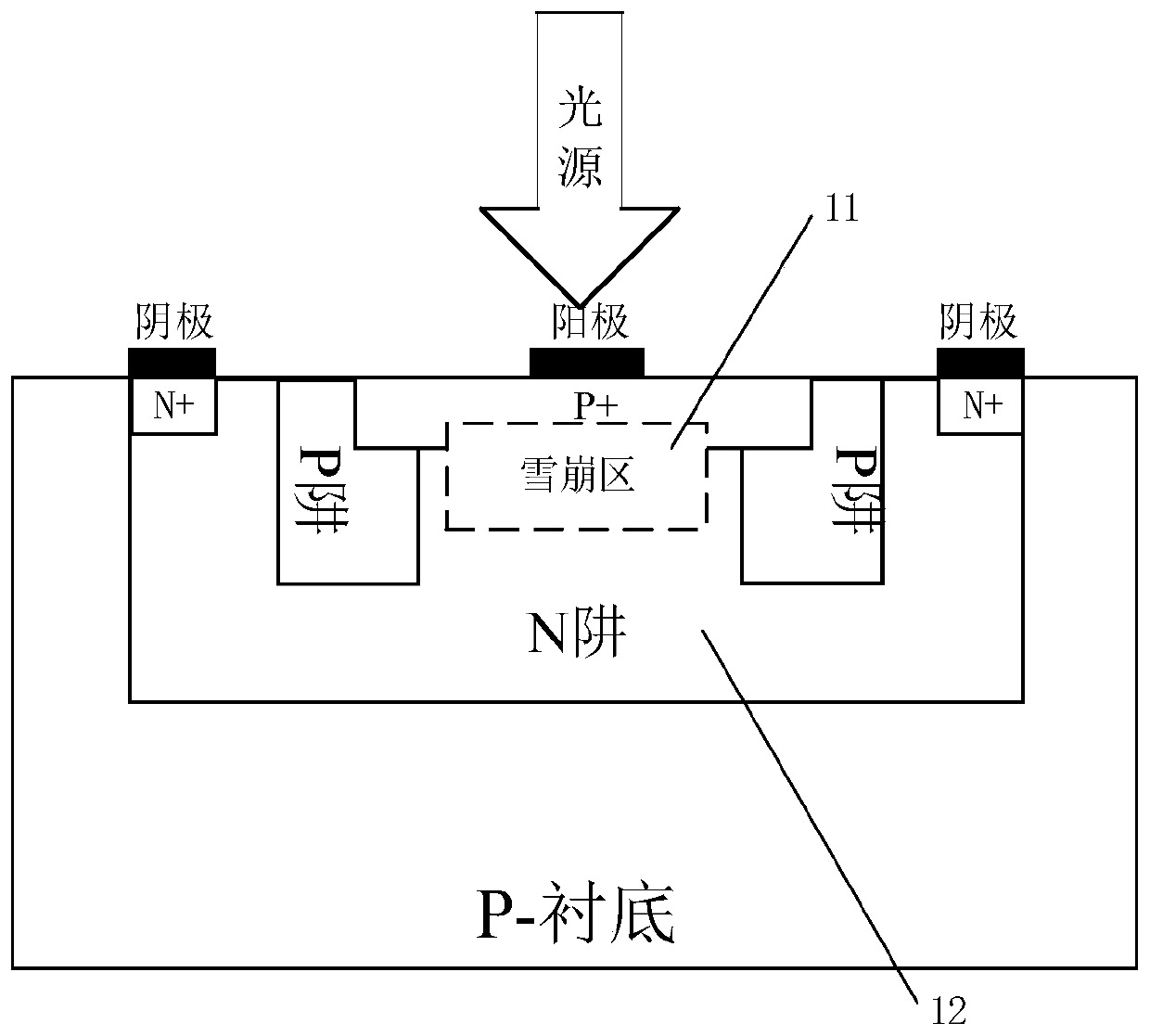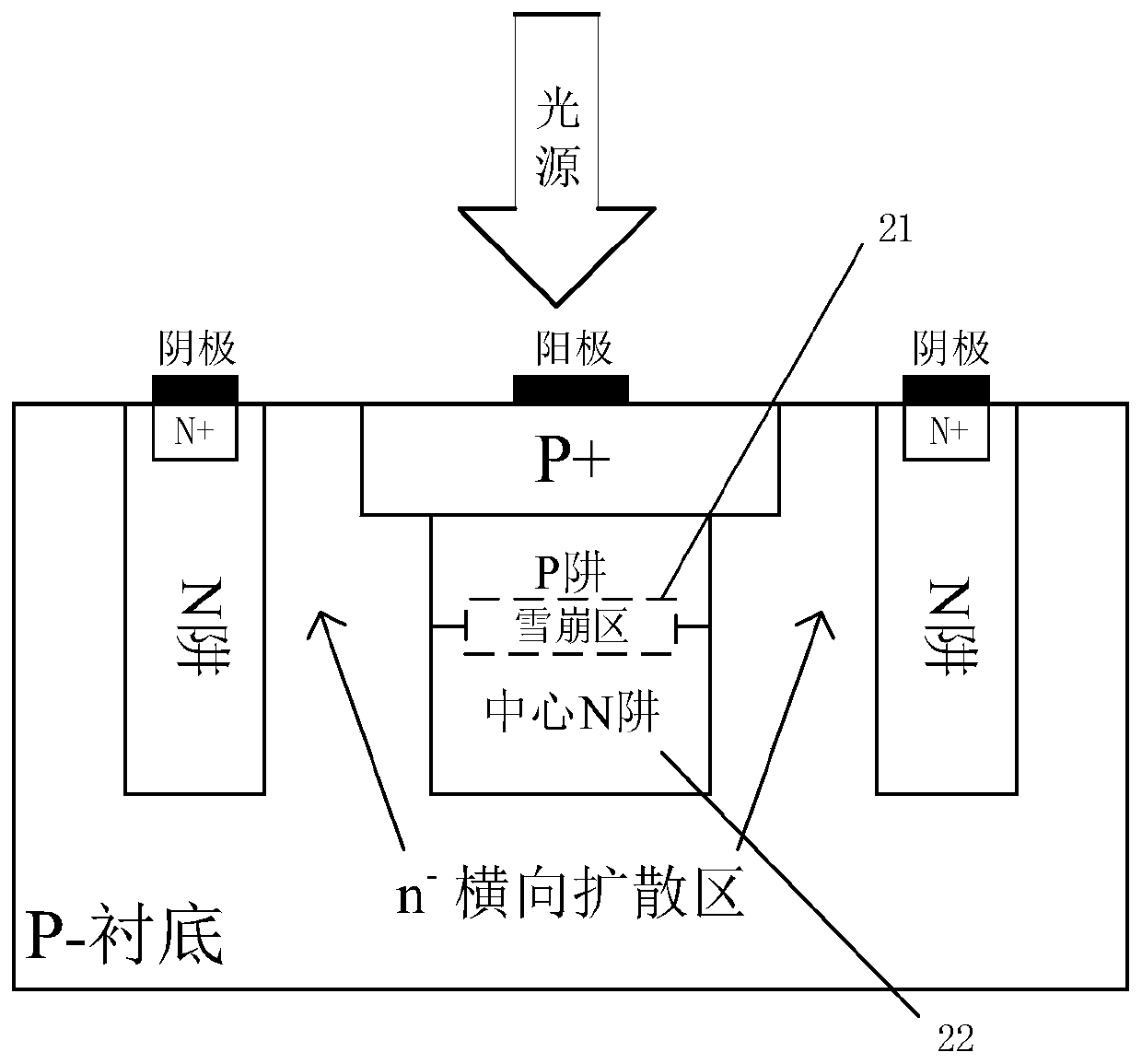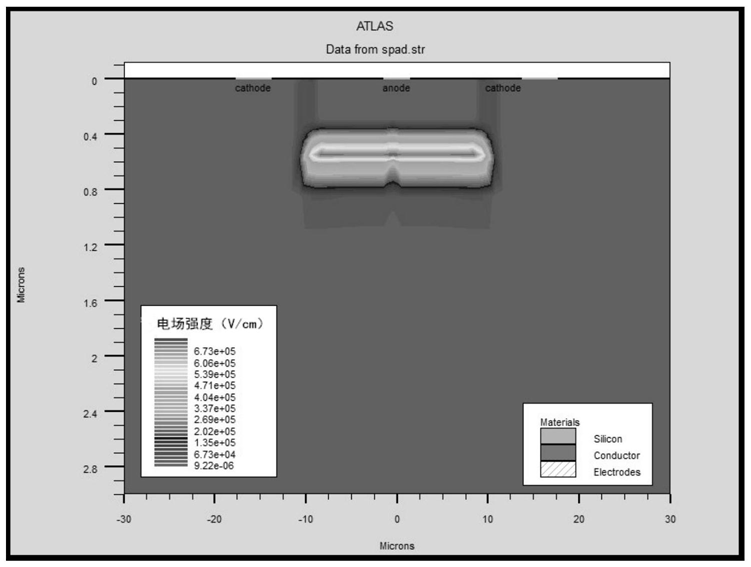A low dark count rate cmos SPAD optoelectronic device
An optoelectronic device and counting rate technology, applied in the field of single-photon detection, can solve the problems of low dark count rate, high fill factor and high photon detection efficiency, and achieve the goal of reducing dark current, reducing dark count rate, and avoiding edge breakdown. Effect
- Summary
- Abstract
- Description
- Claims
- Application Information
AI Technical Summary
Problems solved by technology
Method used
Image
Examples
Embodiment Construction
[0022] The technical solutions in the embodiments of the present invention will be described clearly and in detail below with reference to the drawings in the embodiments of the present invention. The described embodiments are only some of the embodiments of the invention.
[0023] The technical scheme that the present invention solves the problems of the technologies described above is:
[0024] Such as figure 1 Shown is a structural diagram of a conventional CMOS SPAD optoelectronic device. It can be seen from the figure that in this structure, the PN junction is composed of a heavily doped P-type region and a lightly doped N well. The light absorption area (corresponding to the 12 area in the figure). The P wells on both sides of the PN junction act as a guard ring to prevent premature edge breakdown of the device. The working principle of the SPAD optoelectronic device is that when the incident light enters the device and is absorbed by the light absorption region (cor...
PUM
 Login to View More
Login to View More Abstract
Description
Claims
Application Information
 Login to View More
Login to View More - R&D
- Intellectual Property
- Life Sciences
- Materials
- Tech Scout
- Unparalleled Data Quality
- Higher Quality Content
- 60% Fewer Hallucinations
Browse by: Latest US Patents, China's latest patents, Technical Efficacy Thesaurus, Application Domain, Technology Topic, Popular Technical Reports.
© 2025 PatSnap. All rights reserved.Legal|Privacy policy|Modern Slavery Act Transparency Statement|Sitemap|About US| Contact US: help@patsnap.com



